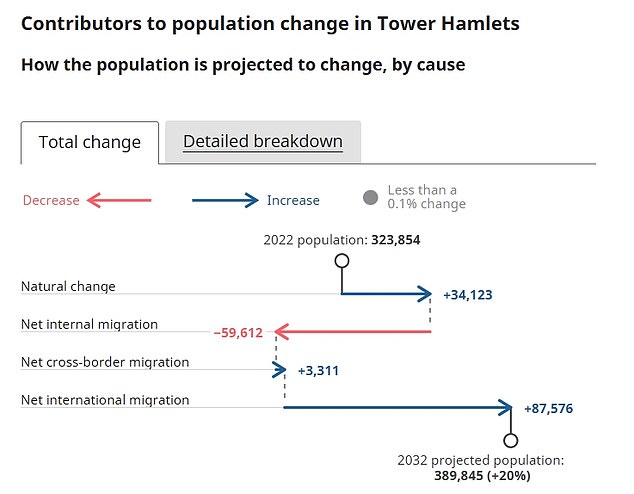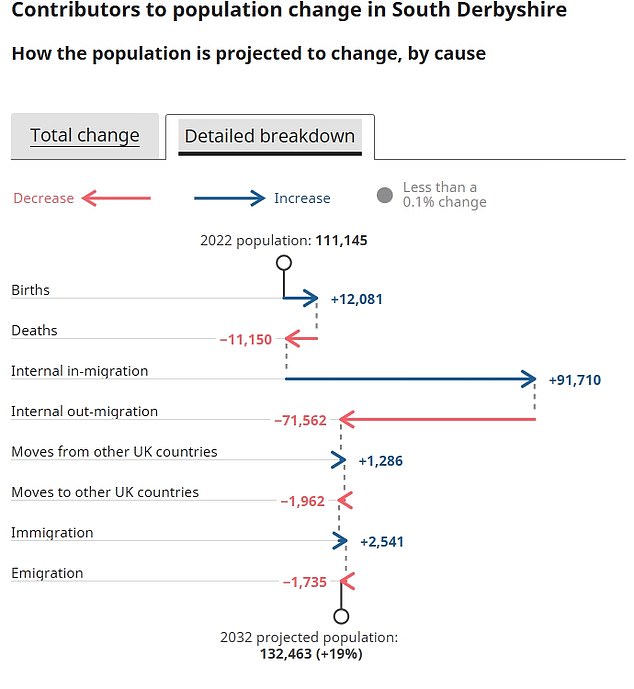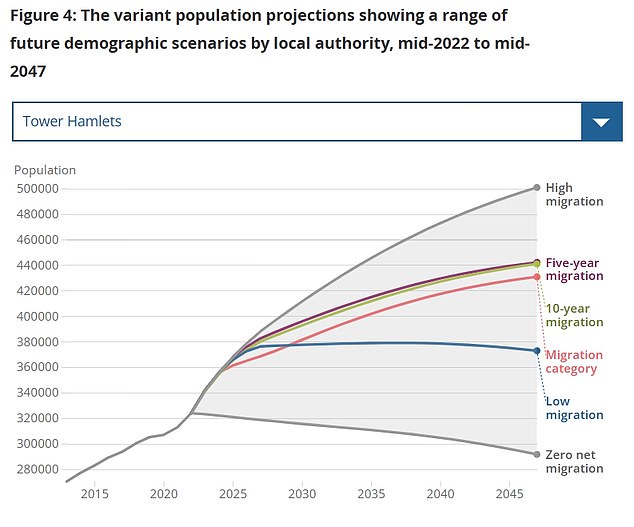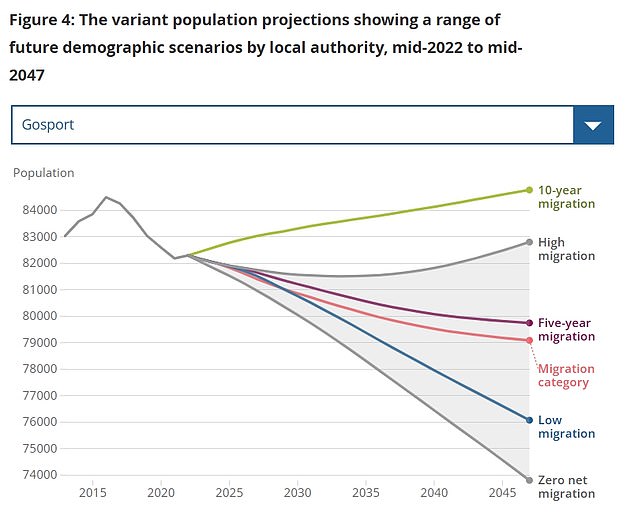Towns have been given a stark glimpse of the future as immigration, social and economic trends reshape the country.
Official projections suggest the population of England will increase by 6.4 per cent to 60.8million between 2022 and 2032. That is lower than the 7.8 per cent anticipated as recently as January, as net immigration has come down from record highs.
For the wider UK the expansion has been revised from 7.3 per cent to to 5.9 per cent.
But the overall numbers released by the Office for National Statistics (ONS) reveal sharp differences in fortunes between local areas.
Tower Hamlets is seen as growing by 20.4 per cent over the period to accommodate 389,845 people, with 165,687 international arrivals outweighing departures and more births than deaths.
In contrast, Gosport’s population is projected to fall by 2.12 per cent to 80,533, primarily because of deaths outstripping births.
Although immigration has been the major driver nationally with natural change broadly balance, some places are seeing dramatic shifts for other reasons.
South Derbyshire is on track to have the second biggest expansion in England between 2022 and 2032, at 19.2 per cent.
That is largely down to people moving there from other parts of the UK, according to the ONS projections.
Your browser does not support iframes.


Some 47 local authorities are projected to see a population increase of at least 10 per cent.
The data also underscore the ageing population. Pensioners are due to make up 18.7 per cent of England’s numbers by 2032, up from 17.6 per cent in 2022.
Only 11 local authorities are projected to have a declining proportion of residents of state pension age.
In a blog accompanying the release today, Head of Population and Household Projections James Robards stressed that the projections ‘give an understanding of the potential future size of the population, based on trends’.
‘They’re not forecasts or predictions. They don’t take into account potential future policy changes,’ he said.
‘They take into account current and past trends, and as those patterns change, we adjust our projections accordingly.’
He added: ‘Since that publication, we have produced new data about the main component of population growth – migration.
‘May’s release provisionally showed that, in the year ending December 2024, migration to the UK had halved compared to the previous year.

The ONS produces a number of variant projections for the population. It says ‘migration’ should now be used as the principal projection, after numbers eased from record highs

Gosport’s population is seen as being likely to fall in the coming years
‘This meant, although in the long term we project annual UK net migration will settle around the 340,000 mark, in the short term our national projections were running too high.’
Mr Robards highlighted that ‘drivers behind the projected population increase vary significantly by area’.
‘In many local authorities, growth is mainly driven by internal migration. Internal migration of young people would furthermore contribute to the number of projected births,’ he said.
Share or comment on this article:
How much bigger will YOUR town get by 2032? Heat map shows the population trends across England – with Tower Hamlets set to grow by a FIFTH but Gosport shrinking